Crushing the Mold: An Interview with JG Thirlwell
Published on March 30th, 2008 in: Art, Interviews, Issues, Music, Underground/Cult |Interviewed by Julie Finley

Manorexia (JG Thirlwell) at Bang On A Can
Photo © 2007 Julie Finley
JG Thirlwell is a man of many different talents. You may know him as one—or possibly all—of his many guises (i.e., Jim Foetus, Foetus, Inc., or many different variations utilizing the word Foetus; Clint Ruin; Frank Want; Wiseblood; Steroid Maximus; Manorexia; Baby Zizanie;, DJ Otesfu; that guy who does the music for The Venture Bros., the remix-dude; the gruff voiceover on MTV Sports; the swank, svelte red-haired guy you’ve seen on the NYC subway who wears white shoes and big sunglasses; etc). He seems to be omnipresent whether you realize it or not, and yet he also often seems to slip under the radar. (Some of you may already keep abreast of what he’s up to; he does have a fervid and endearing fan-base, present company included.)
The man just never stops his workaholic ethic, and he’s sonically and physically maturing like fine wine. Some things get better with age. . . and he’s a shining example of that. Instead of regurgitating his past, he lives for his future without dragging his heels. Instead of making the club circuit with a pathetic “hits” reunion tour like the ones so many others in his age bracket are shamelessly doing, he’s writing commissioned compositions for Kronos Quartet. Instead of trying to cash in like some of the aforementioned hacks, his ambition drives him into many high-achieving directions.
He cannot be pigeonholed no matter how hard some may try to categorize him and he’s consistent in his rejection towards that lazy way of thinking. Each year seems to reveal more and more surprises in his ever-growing and changing Curriculum Vitae. To clarify some of those entries on his CV, I conducted the following interview with Mr. Thirlwell.
What are you currently working on or with? Is 2008 shaping up to be as busy as the last two years?
I am preparing a Venture Bros. soundtrack album.
Also a Foetus album of archival minimal recordings made between 1980 and 1983 (some radically updated or redone where the quality of the original is bad or unfinished). This will be packaged as a digipack with a 48-page booklet of minimal artworks.
And also a new Foetus studio album for release in 2009.
I’m also working on the score of season three of The Venture Bros.
Pulling together some new Manorexia arrangements with my colleague Dr. Shohl (for “Chloé Don’t Know I’m Alive” and “Edison Medicine”).
Doing a remix for the Danger Global Warming project.
. . . and a bunch of other stuff.
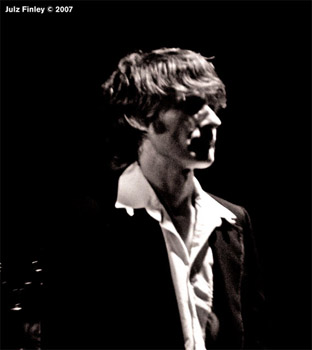
JGT: LEMUR Presents Robosonic Electronic
Photo © 2007 Julie Finley
Is working on The Venture Bros. something you find difficult? I imagine it’s something that has impending deadlines, more like a day job as opposed to when you’re working for yourself. Do you ever feel that you have spew out work just to get it done on time? I could imagine it might feel a little stifling compared to your typical methods. Since the soundtrack is coming out soon, would you like to talk a little bit more about that?
It exercises different creative muscles, sometimes, those of “problem solving.” It’s made me better in some ways. As I said, I work way in advance so I’m never rushing at the eleventh hour. I don’t consider it a “day job.” It’s a different part of my career and legacy. I established a musical vocabulary and identity for the show.
As for the work process, first I get a copy of the animatic (which is the storyboard edited with camera moves and the dialog embedded in it). I watch it and block out musical ideas, sometimes re-editing cues I’ve already written, and make notes for new compositions. I sync them up then view it with the director Chris McCulloch. We talk about what works and what doesn’t. Since we are watching essentially an animated storyboard, sometimes its not always clear what’s going on in the action to me.
We also discuss the character’s motivation, back-story and exposition, and the subtle subtext of each individual joke. Then I get to work creating the score and afterwards we review it again and I tweak it.
Are you still working with LEMUR?
Yes, I will be creating more works for the LEMUR bots and string quartet. Since the first commission, I wrote a new piece trying to exploit some of the resonant qualities of the bots.
I also adapted the Steroid Maximus piece “L’espion Qui A Pleure” and the theme from The Venture Bros. for my concert at the Whitney Museum. I will be developing more pieces, which will hopefully be performed by the bots with the Kronos Quartet in NYC in March 2010.
Could you describe in detail what it was like working with robotic instruments?
I was asked by Eric Singer of LEMUR to write a piece for the LEMUR bots. I decided to add a string quartet to the composition. I began by experimenting with the guitar-bot and got a structure with that. I created a sample program with the percussive sounds and began with that to compose the rest of the parts. Then I started working in the LEMUR space where the instruments are installed and started fine-tuning the work. The bots are quite temperamental and almost take on an anthropomorphic life.
How did you get involved with Strings of Consciousness? Did you write “Asphodel” specifically for that project, or was it a song you had written that you hadn’t found an appropriate outlet for?
They contacted me via a thing called the Internet.
I heard their song and said yes, I could sing on something like that. I wrote my part for their song, going for Crosby-Stills-and-Nash-meets-ELO type of vocal layering. I sent it to them and they released it on an album.
How did you get involved writing for the Arcana book series? What exactly is your contribution to that?
John Zorn edits and publishes the Arcana books, which consist of musicians writing about music. He invited me to write an essay.
The essay I wrote is about tinnitus.
You recently did a show with Jennifer Charles [of Elysian Fields] on Valentine’s Day, would you like to explain what your role in that was? What exactly did you perform?
Jennifer pulled this concert together. It was at the Hiro Ballroom in NYC and she had a three-piece band. We performed the Firewater song “Bad Bad World” together. JC also sang with Nina Perssons (The Cardigans), Jaleel Bunton (TV on The Radio), The Honorary Title, Marc Ribot, Steve Bernstein, Thomas Bartlett, actor Kevin Corrigan, Ed Pastorini, Erik Sanko, and many more.
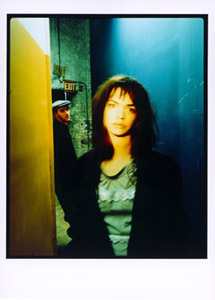
Elysian Fields
You’ve recently worked with Anubian Lights. . . how did that come about? Do you know when that will be released?
I have known Tommy and Len for years and they asked me to do it. They’ve done a lot of work with Lydia Lunch.
They sent me two backing tracks and I picked one that I felt I could do something with. I don’t know when it will be released.
Since you’ve worked with new musicians for London’s Manorexia line-up, did you find that more challenging, or is the fact that these musicians are so adept at what they do, that it’s a natural fit?
Different musicians bring a little something different to the score in the way they play, their instruments and so on.
Instead of asking you about when you’re going to tour as the Foetus rock show (which is completely understandable: why would you want to play shitty nightclubs and burn yourself out, when you could do one-off shows on a higher scale and in more respectable locations like the Whitney?). . . I guess what I’m asking is whether or not you ever plan to do a Steroid Maximus/Foetus/Manorexia-type of extravaganza in NYC (like the one in Krems [Donaufestival 2005])?
It’s expensive to pay 18 musicians and I don’t want to do it half-assed. I want everyone to be paid. That’s a lot of schedules to coordinate and wages to pay. Its not coming out of my pocket, I’ve already done it so I know what it’s like—it’s awesome! It’s somewhat difficult to find the right place to do it. There have been a few times it almost happened then it fell thru.
Since your music is scored for your hired ensembles, so do you actually know how to read music, or are you more of an instinctive “playing by ear” type?
I don’t read music. I never particularly announced myself an “instrumentalist” even.
I write the music in my studio and then work with an arranger to generate the score and re-voice it for the instrumentation I am using. I also generate it myself in the score program of Logic via midi and then make sure that the players can read it. I know a few tricks.
You seem to have too many ideas floating around under the red tuft and not enough time, so how do you stay focused on one thing, so you are able to actually finish it? Do you work in long spurts of energy where you have to shut the rest of the world out in order to for any one idea to take shape, or do you have conflicting melodies in your head that you try to multi-task at once?
I work on many projects at once, and bounce from one to the other. I multi-task, running my life at the same time. I like to work as far in advance as possible—I don’t wait until the last minute. I also usually work seven days a week.
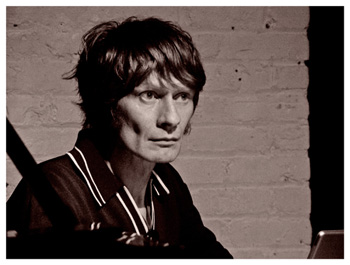
JGT: Manorexia at The Stone, NYC 2006
Photo © Julie Finley
Does your NYC environment distract you from getting work done?
Not really. The energy nourishes me. I like having the option of a lot to see and do even if I don’t get out to everything.
Do you have days where you wake up and actually have a day without a fixed schedule, hence having the time to work, but you sit down in front of your workstation, and the mind just goes blank?
When I am traveling I sometimes have a non-fixed schedule. Otherwise, because I am very busy I can’t remember when I haven’t had a day where I’ve had a lot of things planned. I usually know what I’m going to be doing but there’s flexibility within that. The older I get the more precious time becomes.
Anyone reading this interview has read about your influences already (so I won’t insult your intelligence by making you answer that again), but I’m curious as to what musical contemporaries currently impress you, as in, have you recently discovered anything you would deem as mind-blowing?
How can anyone possibly know my influences? Even I don’t. My influences may not necessarily show themselves in my art!
I’m not sure whom I consider contemporaries even. . .
Off the top of my head, some “contemporary rock” acts operating today that engaged me lately include Grizzly Bear, Panda Bear, Wolf Eyes, Beirut, Services, Dirty Projectors, The Zs, Danielson, Xiu Xiu, Extra Life, plus many more.
But I guess I mainly I listen to classical, psychedelia, prog, soundtracks, and international music.
Are you fluent in French or do you know just enough to get your point across? Did you write you lyrics for “Mon Agonie Douce” [from 2005’s LOVE album] and then have them translated?
I speak French all right, enough to have basic conversation.
I wrote the lyrics for “Mon Agonie Douce” in French and had a French friend correct my grammar.
Any other languages you have fluency in?
I also speak German ein bischen and would like to learn Spanish. (For the song “Chingada,” [from THAW, 1987] I had Martin Bisi translate the lyrics, although my finding the word “Chingada” was the catalyst.)
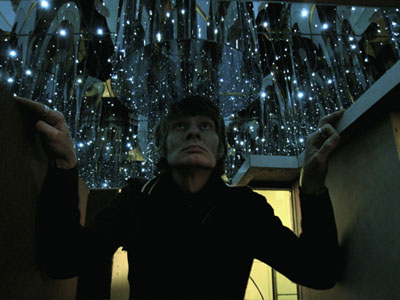
Narcissum Escenda
Photo © Maya Hardinge
What is Der Kastanienball, and how did you get involved in it?
It was an opera directed by Stefan Winter of the record label Winter and Winter.
He invited Noël Akchoté to be musical director and Noël invited me.
Is that something that is available on audio format, or even possibly video?
A soundtrack album was released on Winter and Winter.
So what is Der Kastanienball about?
Stefan wanted it to be an experimental opera that pushed boundaries. There were a lot of ideas in it. I feel some of the ideas got compromised along the way by the diva-ish actions of the leads. It was interesting and sometimes uncomfortable to do. The musicians were top notch! It played for three nights in the Opera House in Munich.
When you do your graphic art, do you do it all by hand (older mechanical methods) and then re-translate them to current digital mediums? Have you had a chance to learn the Adobe software suite, or just bits and pieces of what you need? You’ve mentioned you keep one foot in the future and one in the stone age when it comes to music technology. . . does that ring true with your artwork as well?
Sometimes I do sketches that I scan but generally start right in with Photoshop.
I used to do everything by hand, including layer separation and hand lettering.
Since you were part of the Exit Art exhibit, and now recently the Love’s Secret Domain one, have you thought of doing a solo show?
I just finished a sculpture for a group show in Östersund, Sweden [the Teleport Färgfabfriken exhibition at the new Färgfabriken museum]. It’s called “Narcissum Escenda,” and the materials are plywood, programmed circuit board with 30 LEDs and plexi glass mirrors, and two-way mirror and silver mylar. There is no sound element.
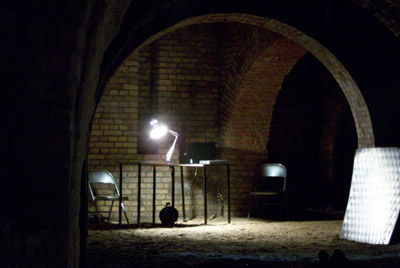
Workstation from freq_out 4 2006
Vault under the Schlossplatz in Berlin
Photo © Frank Bode
You seem to jump around different artistic mediums, but what do you feel the most “at home” or “confident” indulging in?
There are a few things I feel at home or confident in but I like to challenge myself. This is an idea I had and I realized it and had a couple of people help me fabricate it. It’s very difficult to document, and un-downloadable! I am planning to continue with sculptural works.
Will you be doing freq-out or Lyrics in Libraries again?
We hope to do at least six more freq-outs so everyone has hit each frequency once. It is most eloquently explained at its own website. It looks like the next freq-out will be in Belgium in September 2008.
[freq_out is a sound installation comprised of 12 individual sound works each utilizing a specific frequency range, made on-site, and amplified to act as a single, generative sound-space.—Ed.]
As for Lyrics in Libraries, that was a project where they invited musicians to read their lyrics. I read lyrics and other writings backed by tapes and Angharad Davies improvising on violin.
I since did another spoken word show with Angharad at a spoken word series in Brussels.
I currently have no plans to do it again.
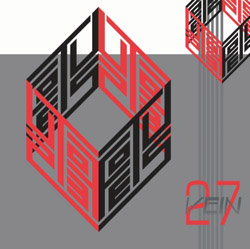
Foetus, VEIN, 2007
On to DJ Otesfu. . . how does Otesfu differ from all the other DJs out there? For those who’ve not been to an Otesfu event, is there any signature to your style, or does it depend on your mood?
It depends on the venue, the vibe and the audience, and what I feel like trying. Actually I don’t use then name Otefsu any more, haven’t for some years.
It used to be more crime-spy sounding, now it’s more beat-tastic free form.
Do you plan on doing any more work under Baby Zizanie?
Baby Zizanie started a piece for a Jodorowsky tribute album, but that project seemed to fizzle before it got started. We made the piece, though. I’d like to do some more BZ works with Mr. [Jim] Coleman, but under a different working scheme. The initial model for BZ was using electronics and creating a framework and improvising live over it, with live visuals. It was all about transitions rather than destinations. We did the latest piece via email exchange and it uses more acoustic sound sources, so I d like to try more works in this method with Coleman as it flips the BZ model around.
Who are Christian Marclay and Chloé Delaume? What was your musical involvement with them?
Christian Marclay is an artist whose work refers to sound and music culture. He is also a “record player” (as opposed to a DJ) and is quite brilliant.
I have known him for some years. Recently I was lucky enough to perform his Screen Play piece, once in Lyon with FM Einheit and Frédéric Le Junter, and once in London with Blevin Blechtum.
The Screen Play piece is a film Christian edited together from found footage, which has also occasionally has graphic elements added on top. This forms the “score” which cues and inspires the performance to create the live “soundtrack.”
Chloé Delaume is a French author with whom I collaborated on a performance project some years ago.
You can look them both up on the Internet and get a more rounded picture than what I am going to tell you here.
If you had to pick a favorite remix on VEIN, which one would were you the most pleased with overall? (My picks were yours and Trztn‘s).
I don’t have a favorite child. I am very happy with how mine turned out.
I think it’s a great album. I may have browbeat some of the artists a bit which some may say is a no-no in the remix world, but ultimately my name’s going on there.
Is Wiseblood a project that has been abandoned for good? Do you feel that you’ve eclipsed that part of your many guises?
It is indefinitely on ice. I haven’t been in touch with Roli [Mosimann] for a while.

Photo © Bre Pettis
So has Clint Ruin gone into a witness protection program or is he in retirement?
He’s currently in a mental asylum in Bavaria undergoing electro-shock therapy.
What are you doing these days to maintain that youthful glow?
Hydrate and moisturize?
With titles like Antabuse, Ataxia, Bruxism, Cirrhosis Of The Heart, Ectopia, Manorexia, Pareidolia, Propagnosia, The Hardened Artery, Thalassaphobia, Thrush, Tubercular Bells, Zithromax Jitters, etc., you seem to have an obsession with afflictions or medical contexts. . . are you a total hypochondriac, or when you are stuck in airport lounges with your laptop, do you spend too much time on WebMD & Wikipedia. . . or did you stumble upon a medical textbook you just can’t put down once you start reading it? Inquiring minds want to know!
Yes, names of afflictions are a thread in my work. I’m not sure why I’m drawn to them but part of it is the linguistics and the endings. I also like words with “X” in them. I have several threads in my work, including the color palettes that I choose and the monosyllabic four-letter title.
Are you running out of four-letter monosyllabic words yet?
Nein.
Where’d you get those snazzy white shoes and those amber-tinted shades? Are the shades prescription strength?
The shoes from all over—I got the latest pair in Bangkok. I am known for wearing exclusively white footwear.
And yes, the amber shades are prescription strength of late.
You seem to gravitate towards kitschy things in general, and I’m sure you have a collection of odds/ends that you just had to have but don’t really serve any other purpose than to make you giggle from time to time. What’s the best kitschy item you own, the crown jewel so to speak? Was it a gift or something you found on your own?
No, I wouldn’t say I “gravitate towards kitschy things.” I have broad interests, and obsessions that come and go in about a week. I don’t really “collect” anything anymore except music. My possessions were pruned ten years ago. My most mammoth unwieldy collection has to have been of Berrie’s occasion statues, which I gathered some years ago. . . I have hundreds. Please don’t send me any!
So what is that big “X” shaped thing that seems to show up in the background of many photos of you over the years?
It’s a cross structure that was built by Richard Phillips for the play South of your Border by Lydia Lunch and Emilio Cubeiro [in 1988].
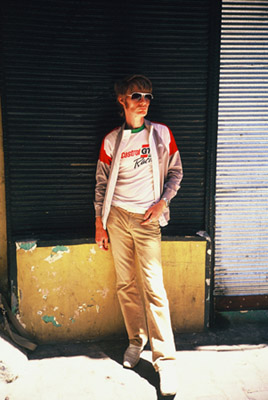
JGT in Istanbul, Turkey
Photo © 2005 Aylin Gungor
From Bant Magazine
In the final scene Lydia was strapped to it naked while blood dripped down her body and one of my songs blasted thru the PA as the soundtrack.
It ended up at my place.
Mint or Cinnamon? Chocolate or Vanilla? Coffee or Tea?
Diet Coke, Bolthouse Carrot Juice, Bahlsen Choco Leibniz.
Are the pretty ones really always insane? If that’s the case, then why bother?
Because they are the ones that hypnotize.
Do you think that James needs to have more “faith?”
Absolutely.
JG Thirlwell will be showing “Narcissum Escenda” at the Teleport Färgfabfriken exhibition at the new Färgfabriken museum in Östersund, Sweden. The opening is April 1-3, 2008

2 Responses to “Crushing the Mold: An Interview with JG Thirlwell”
May 27th, 2008 at 12:43 am
[…] is a stretch, but I’m limber and drunk enough to reach that far right now. Thirlwell’s his latest work, a modern sculpture called Narcissum Escenda, is currently on display at the Fargfabriken Museum in […]
December 18th, 2008 at 10:32 am
[…] I did an interview with JG Thirlwell. Check it out! […]
Time limit is exhausted. Please reload the CAPTCHA.